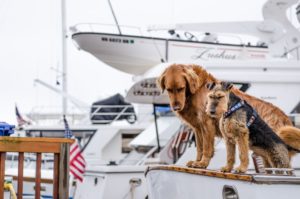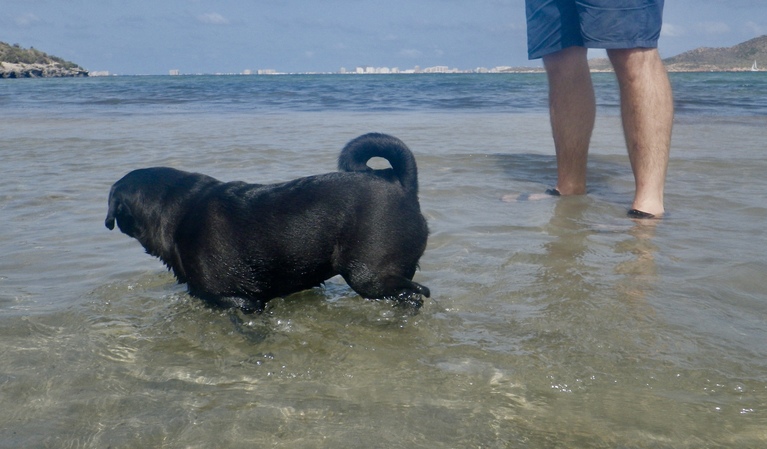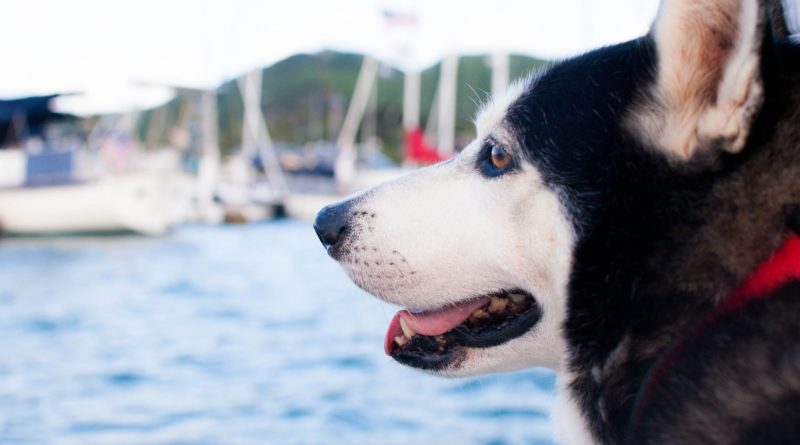5 tips for sailing with a dog
Taking your pooch cruising or having a temporary canine crew member? Prepare for sailing with a dog with the help of these 5 tips.
1. Acclimatise the dog to life onboard before heading out

Just like people, dogs need to get used to life on a boat. There will be new smells, suddenly the floor is moving and walks may not be as regular as before. Make the transition from land life to sea life easier by taking it one step at the time. Spend a few days on board the boat in the marina so the dog can settle into the new environment. You can still walk him at the normal times, but he will learn where his bed is on the boat and will get used to the new noises and smells on board.
Once the dog is comfortable, you can start by taking him out on a day trip. Leave him downstairs while you are leaving the marina. This will also be easier for you, because they won’t be in the way while you are manoeuvring and hoisting the sails. Once you have settled into a nice sail you can take the dog into the cockpit. You will see that most dogs are happy once they are close to the people they know and they take to sailing without any problems.
2. Create a routine for toilet-time
From the start, assign a designated place where your dog can go toilet. There are several options: you can chose to have a spot indoors (for example a plastic tray with a pet training mat in it) or outdoors or both.
A lot of people take out an artificial grass bathroom mat on deck for the dog to go on when at anchor. This works very well for most doggies however keep in mind that this may not be an option when you are sailing in a force 7 wind. In this case, it helps if you also have a fixed time and routine when the dog normally does its business. One way to do this is to use a certain phrase when the dog relieves itself on land, for example ‘go potty’. You can then use this verbal aboard when you put them on the puppy potty trainer mat, at a time when you want him to go.
Whatever you do, don’t discourage the dog or punish it for mistakes. It is more important that he doesn’t hold it in and spends the trip in relative comfort, regardless of where the job is done.
3. Practise swimming with the dog

Some dogs are natural swimmers, others aren’t. You can’t expect a bulldog to win the 400m breast stroke, however you can make it familiar with being in the water. In shallow waters you can tempt them to walk in with you. Usually they will stop when it becomes uncomfortable. For some this may be when their bellies gets wet, for others once the head starts touching the water. Don’t force them to go in any further. At least they will get familiar with the feeling of water on their paws and maybe next time they are brave enough to go in a little bit further.
When you go swimming off the boat, you can carefully take the dog with you in the water. For larger breeds you may need another person to help you with this. With a dog life jacket on, they will stay above water even when they are not great swimmers. If you stay close to the swimming platform or ladder, you can put the dog back on the boat when it becomes too uncomfortable. This is an ideal way to practise swimming as they can increase the distance when they become more accustomed to it.
4. Safety first

Make sure that you take the necessary safety measures when sailing with a dog, even when the dog can swim. There are life jackets for dogs in all colours and sizes. They will give you the assurance that if your dog does fall overboard, he will be able to stay afloat. Even better, of course, is to prevent any accidental splashes. Keeping the dog on a short tether attached to his life jacket and hard points on the boat is therefore another necessary measure.
With the dog below decks make sure nothing can fall on top of him, in the event of a rough sea. Make sure to check up on him regularly and ensure that his water bowl is full.
5. Check vaccinations and carry emergency medication
Before heading off, check that your canine is up to date with vaccinations. It is much easier to top these up at your local vet than trying to find a vet in a remote anchorage. For some countries it is necessary to have a signed health certificate. Check what the restrictions are for your destination and prepare in advance. Noonsite.com is an excellent source of information on travel requirements in most countries of the world for dogs and other pets.
If you are going to be sailing further off-shore, you should carry some emergencies supplies for your dog. Omezaprole is a well-known anti-ulcer medication that can also help if your dog is suffering from seasickness. Some anti-nausea medication like Calmivet can come in handy, even if your dog does not normally suffer from seasickness. It can also be used as a tranquillizer if needed. In addition, bring an antibiotic and a nonsteroidal anti-inflammatory drug (NSAID) which can provide pain relief especially in the joints.
Of course, you hope you will never have to use a pet first aid kit. But when you do, you will be relieved to have one.
Once you’ve been sailing with a dog, you wouldn’t want to go without them!

